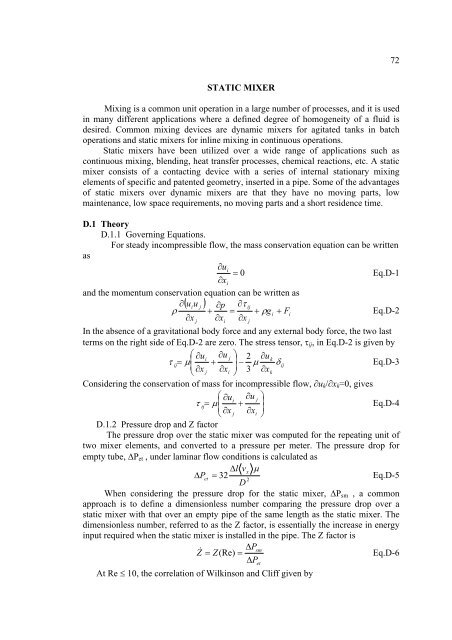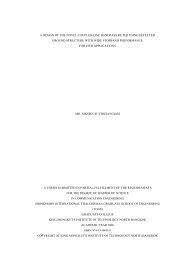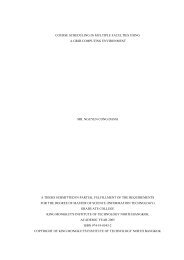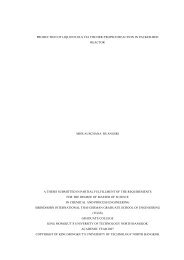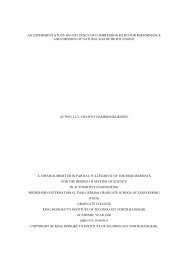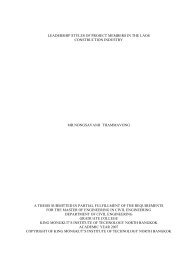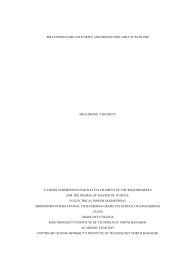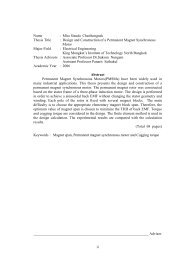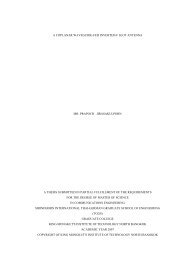DAMAGE PREDICTION OF BALL JOINTS IN ANTI-ROLL BARS
DAMAGE PREDICTION OF BALL JOINTS IN ANTI-ROLL BARS
DAMAGE PREDICTION OF BALL JOINTS IN ANTI-ROLL BARS
You also want an ePaper? Increase the reach of your titles
YUMPU automatically turns print PDFs into web optimized ePapers that Google loves.
72<br />
STATIC MIXER<br />
Mixing is a common unit operation in a large number of processes, and it is used<br />
in many different applications where a defined degree of homogeneity of a fluid is<br />
desired. Common mixing devices are dynamic mixers for agitated tanks in batch<br />
operations and static mixers for inline mixing in continuous operations.<br />
Static mixers have been utilized over a wide range of applications such as<br />
continuous mixing, blending, heat transfer processes, chemical reactions, etc. A static<br />
mixer consists of a contacting device with a series of internal stationary mixing<br />
elements of specific and patented geometry, inserted in a pipe. Some of the advantages<br />
of static mixers over dynamic mixers are that they have no moving parts, low<br />
maintenance, low space requirements, no moving parts and a short residence time.<br />
D.1 Theory<br />
D.1.1 Governing Equations.<br />
For steady incompressible flow, the mass conservation equation can be written<br />
as<br />
∂ui<br />
= 0<br />
Eq.D-1<br />
∂xi<br />
and the momentum conservation equation can be written as<br />
∂( uiu<br />
j<br />
) ∂p<br />
∂τ<br />
ij<br />
ρ + = + ρg<br />
i<br />
+ Fi<br />
Eq.D-2<br />
∂x<br />
∂x<br />
∂x<br />
j<br />
i<br />
In the absence of a gravitational body force and any external body force, the two last<br />
terms on the right side of Eq.D-2 are zero. The stress tensor, τ ij , in Eq.D-2 is given by<br />
⎛ u u<br />
j<br />
⎞<br />
i<br />
uk<br />
τ<br />
ij<br />
µ ⎜<br />
∂ ∂<br />
⎟<br />
2 ∂<br />
= + − µ δ<br />
ij<br />
Eq.D-3<br />
x<br />
j<br />
x<br />
⎝ ∂ ∂<br />
i ⎠ 3 ∂xk<br />
Considering the conservation of mass for incompressible flow, ∂u k /∂x k =0, gives<br />
⎛ ⎞<br />
⎜<br />
∂u<br />
∂u<br />
i j<br />
τ + ⎟<br />
ij=<br />
µ<br />
Eq.D-4<br />
⎝ ∂x<br />
j<br />
∂xi<br />
⎠<br />
D.1.2 Pressure drop and Z factor<br />
The pressure drop over the static mixer was computed for the repeating unit of<br />
two mixer elements, and converted to a pressure per meter. The pressure drop for<br />
empty tube, ∆P et , under laminar flow conditions is calculated as<br />
∆l<br />
vx<br />
µ<br />
∆ Pet<br />
= 32<br />
Eq.D-5<br />
2<br />
D<br />
When considering the pressure drop for the static mixer, ∆P sm , a common<br />
approach is to define a dimensionless number comparing the pressure drop over a<br />
static mixer with that over an empty pipe of the same length as the static mixer. The<br />
dimensionless number, referred to as the Z factor, is essentially the increase in energy<br />
input required when the static mixer is installed in the pipe. The Z factor is<br />
Psm<br />
Z & ∆<br />
= Z(Re)<br />
=<br />
∆P<br />
Eq.D-6<br />
At Re ≤ 10, the correlation of Wilkinson and Cliff given by<br />
j<br />
et


